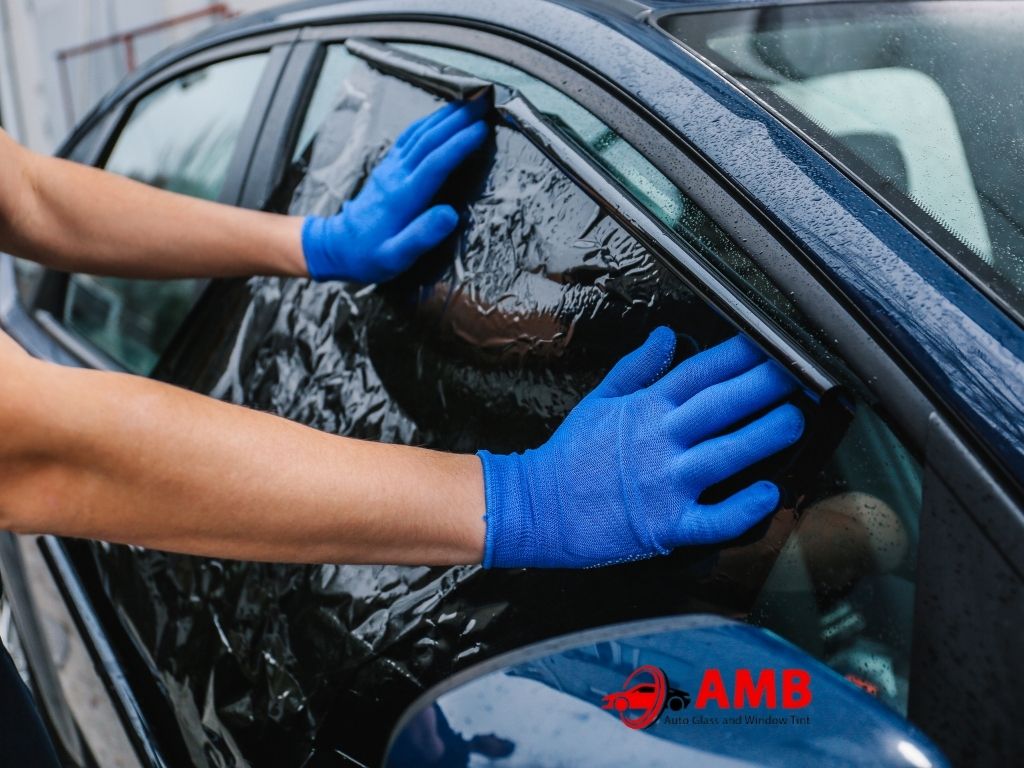Understanding the dynamics of laws and regulations that govern car modifications can be quite complex, and window tinting is not exempt from this complexity. Different states have distinctive rules defining what is acceptable, with particular specifications on aspects like the permissible darkness of the tint, which windows can be tinted, and the degree of reflectivity that is legally allowed. Being well-informed and adhering to these rules is critical to avoid the unpleasant repercussions of non-compliance, including penalties and fines. Therefore, this article provides a comprehensive guide detailing the essential legal requirements for car window tinting in San Diego.
Additionally, being aware of the legal requirements for car window tinting can mitigate potential safety hazards. Overly dark or reflective tints can obstruct the driver’s visibility, thus escalating the risk of accidents. Moreover, it can also hinder law enforcement officers from conducting safety checks or interacting effectively with drivers during traffic stops. Consequently, the regulations for San Diego window tinting have been designed to maintain a balance between personal aesthetic choices, road safety, and law enforcement necessities.
1. Window Tint Darkness
The darkness of a window tint is quantified by the Visible Light Transmission percentage (VLT%), signifying the amount of light a window tint film permits to pass through. California law requires the front windshield and front side windows to pass more than 70% of light, ensuring drivers’ visibility is not severely impacted. The back windows, however, can be tinted as dark as the vehicle owner desires. This regulation allows for some level of customization and privacy.
Window tinting serves several purposes, including reducing glare, blocking harmful UV radiation, and providing a layer of privacy. However, excessive tinting can compromise visibility, particularly during the night or in poor weather conditions. Therefore, the limitation on tint darkness for the front windshield and side windows is designed to ensure that drivers have a clear, unhindered view of the road and their surroundings.
It’s also worth noting that even though the regulations for back window tinting are less strict, drivers should still consider safety factors before deciding on very dark tints. For instance, excessively dark back windows can hinder visibility when reversing or checking the rear-view mirror. Therefore, while personal preference plays a part, it’s advisable to balance this with safety considerations.
2. Window Tint Reflectivity
While reflective window tints that create mirror-like effects may be visually appealing, California law prohibits any tints that are excessively reflective. This restriction applies to all vehicle types and is in place to prevent any reflections that could potentially distract other drivers or impair visibility on the road.
Reflective tints, particularly those with mirror-like effects, can cause glare, making it challenging for other road users to see clearly. This can be particularly hazardous during sunny days or at night when the glare from street lights or oncoming vehicles can be amplified. As such, while the choice of tint may be partly influenced by aesthetic considerations, safety should be the primary concern.
In San Diego, window tinting with lower reflectivity levels can be a sensible choice. Such tints can help reduce heat and glare inside the vehicle without creating potential visibility issues for other drivers. They can also provide a level of privacy without contravening the local and state regulations on window tint reflectivity.
3. Tint Color Limitations
Besides VLT% and reflectivity, state laws also specify the allowed tint colors. In California, tints in red, amber, and blue are entirely prohibited. These colors are typically reserved for emergency vehicles, and their use could potentially lead to confusion or misuse.
Tint colors can dramatically alter a vehicle’s appearance, but the choices are not merely aesthetic. Red, amber, and blue are colors widely recognized as signals on the road. They are used in traffic lights, police cars, ambulances, and other emergency vehicles. Using these colors for window tinting could potentially mislead other road users and potentially lead to accidents.
Though the law restricts the use of certain colors, car owners in San Diego still have a wide range of options to choose from. Neutral colors, such as black and grey, are popular choices as they offer a sleek look without infringing the law. However, it’s always advisable to verify any color choice with a professional San Diego window tinting service to ensure compliance with state regulations.
4. Certification And Sticker Requirements
In California, all tinted vehicles must have a sticker between the tinted glass and the driver. This sticker should identify the legal VLT% and contain information about the tint installer. This regulation ensures that the San Diego window tinting is compliant with all legal requirements and provides a useful reference for law enforcement.
This sticker is not just a legal requirement; it also serves a practical purpose. In the event of a traffic stop or vehicle inspection, the sticker provides immediate evidence that the tint meets the state’s legal requirements, which can prevent unnecessary fines or penalties.
However, it’s crucial to ensure that the sticker information is accurate and up-to-date. The installation of a tint that does not meet the specifications on the sticker could lead to penalties. Therefore, whenever window tinting is replaced or updated, a new sticker reflecting the accurate VLT% and installer’s details should be placed appropriately.
5. Medical Exemptions For Window Tinting
Recognizing that certain medical conditions may necessitate darker tints, California law allows exemptions for individuals who have specific medical conditions that make them sensitive to sunlight. A signed letter from a licensed physician must always be kept within the vehicle as proof of the exemption.
Conditions that may qualify for an exemption include lupus, photosensitivity, melanoma, and certain other skin or eye conditions. If an individual with such a condition is driving or regularly riding in the vehicle, darker tints may be allowed. However, the specific requirements and application process for these exemptions can be complex, and professional advice should be sought.
It’s important to note that having a medical exemption does not provide blanket immunity from window tinting regulations. The exemption allows for darker tints, but all other rules — such as color restrictions and the prohibition on reflective tints — still apply. Therefore, even with an exemption, it’s crucial to ensure that all aspects of San Diego window tinting are in compliance with state laws.
6. Manufacturer And Installer Regulations
All manufacturers and installers of window tint films in San Diego must be certified by the state. This requirement ensures that all products meet the necessary quality and safety standards. Similarly, installers must abide by the state’s regulations, making sure that the applied tints meet all the legal specifications.
The certification process for manufacturers involves rigorous testing of the tint films to ensure they meet safety standards, including shatter resistance and VLT%. This provides assurance to customers that the products they are purchasing meet a certain quality standard and are compliant with state regulations.
For installers, certification is proof of their expertise and adherence to legal guidelines. This not only gives car owners confidence in their services but also ensures that they remain updated about any changes in state regulations. Therefore, when choosing a San Diego window tinting service, it is recommended to ensure they are certified and adhere to all legal requirements.
Penalties For Non-Compliance
Non-compliance with window tinting regulations in San Diego can lead to a series of penalties. It’s essential to understand these potential consequences to emphasize the importance of adhering to the laws, ensuring safety, and maintaining peace of mind while driving.
1. Fines
The most common penalty for non-compliant window tinting is a fine. The amount can vary depending on the severity of the violation and whether it’s a repeat offense. First-time offenders might receive a “fix-it” ticket, which is a notice to correct the violation, usually accompanied by a small fine. However, if the tint is not removed or replaced to meet the legal standards, the fines can increase substantially.
Repeated offences can lead to progressively larger fines. The escalation in penalty aims to deter drivers from continuing to violate the tinting regulations, reinforcing the importance of compliance. Paying recurring fines not only becomes a financial burden but also a legal concern, as persistent violation can potentially lead to more severe penalties.
2. Removal Of Illegal Tint
In some cases, law enforcement officers may require the removal of the illegal tint immediately. This is more likely in cases where the violation is extreme, such as tints that significantly impair visibility or are of a prohibited color. In these cases, drivers might be ordered to remove the tint before the vehicle can be driven again.
The removal of illegal tint is not just a penalty in itself but can also lead to additional costs. The driver will need to pay for the removal of the old tint and the installation of a new, compliant one. In cases where the driver chooses not to replace the tint, the vehicle will lose the benefits of window tinting, such as reduced glare, UV protection, and increased privacy.
3. Vehicle Impoundment
In severe cases, non-compliant window tinting can lead to vehicle impoundment. This means that the vehicle is seized and stored by law enforcement until the illegal tint is removed or replaced with a legal one. This penalty is typically reserved for repeat offenders or particularly severe violations.
Vehicle impoundment is a significant inconvenience and can also be a considerable expense. The driver is responsible for all costs related to the impoundment, including storage fees. Additionally, the vehicle cannot be reclaimed until proof is provided that the illegal tint has been removed or replaced, adding the costs of tint removal and replacement to the overall penalty.
4. Increase In Insurance Premiums
While not a direct penalty, non-compliance with window tinting laws can lead to an increase in car insurance premiums. If a vehicle is involved in an accident and is found to have illegal window tinting, insurance companies might consider this a contributory factor to the accident. As a result, they might increase the insurance premium due to the perceived higher risk.
Moreover, repeated fines or penalties for non-compliant window tinting can also affect insurance premiums. Insurers view these violations as indications of risky behavior, which can influence the cost of insuring the vehicle. Therefore, maintaining compliance with window tinting regulations is not just a matter of avoiding fines and penalties; it can also have a broader impact on the cost of vehicle ownership.
Summing Up
The legal requirements for car window tinting in San Diego encompass an array of factors. From the permissible levels of tint darkness and reflectivity to acceptable tint colors, required certifications and stickers, medical exemptions, as well as manufacturer and installer regulations. Understanding and complying with these regulations is crucial not just to avoid penalties, but also to ensure safety and peace of mind while driving on the roads of San Diego.

